slap tear rehab protocol without surgery pdf

A SLAP tear is an injury to the glenoid labrum‚ common in overhead athletes‚ often managed with non-surgical approaches like supervised rehabilitation and activity modification.

1.1 Definition and Overview
A SLAP (Superior Labrum Anterior to Posterior) tear is an injury to the glenoid labrum‚ a cartilaginous ring surrounding the shoulder socket. It commonly occurs in overhead athletes and can result from acute trauma or repetitive stress. Non-surgical management focuses on improving joint function and reducing pain through supervised rehabilitation‚ activity modification‚ and anti-inflammatory measures‚ aiming to avoid surgical intervention and restore shoulder mobility effectively.
1.2 Prevalence in Athletes and Non-Athletes
SLAP tears are more prevalent in athletes‚ particularly those engaging in overhead sports‚ accounting for 1-3% of shoulder injuries. Non-athletes can also experience these tears due to falls or heavy lifting. Interestingly‚ SLAP lesions may be more common in asymptomatic individuals than previously thought‚ highlighting the need for accurate diagnosis and tailored rehabilitation strategies to address both symptomatic and asymptomatic cases effectively.
Understanding the Injury
A SLAP tear involves the glenoid labrum‚ crucial for shoulder stability. Common in athletes‚ it often results from repetitive overhead motions or acute trauma.
2.1 Anatomy of the Glenoid Labrum
The glenoid labrum is a fibrocartilaginous structure surrounding the glenoid cavity‚ enhancing shoulder stability and serving as an attachment point for ligaments and the long head of the biceps tendon.
2.2 Types of SLAP Tears
- Type I: Fraying or degeneration of the labrum without detachment.
- Type II: Labrum remains attached but is loose‚ causing instability.
- Type III: Bucket-handle tear with displacement of the labrum.
- Type IV: Tear extends into the biceps tendon‚ often requiring surgical intervention.
2.3 Common Causes and Risk Factors
SLAP tears often result from repetitive overhead activities‚ such as throwing or swimming. They are common in athletes‚ particularly those involved in sports like baseball or volleyball. Traumatic incidents‚ like falls on an outstretched arm‚ can also cause SLAP tears. Additionally‚ lifting heavy objects or performing repetitive overhead tasks at work may contribute. Age and pre-existing shoulder conditions can increase the risk of developing a SLAP tear.
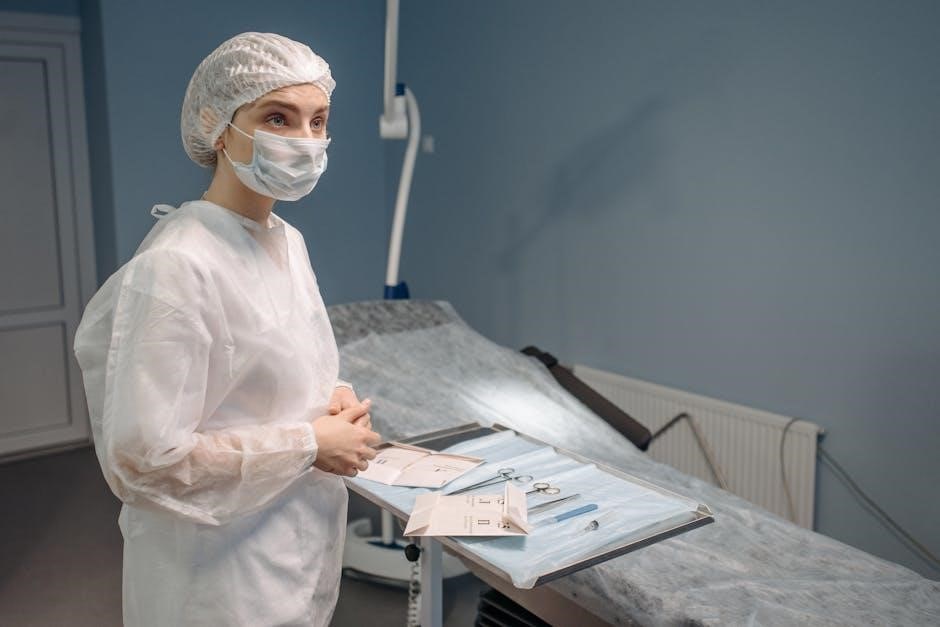
Symptoms and Diagnosis
SLAP tears often present with deep shoulder pain‚ especially during overhead activities. Limited range of motion and weakness are common. Diagnosis involves physical exams and imaging like MRI.
3.1 Clinical Presentation and Pain Patterns
Patients with SLAP tears often report deep shoulder pain‚ particularly during overhead activities or movements like throwing. Pain may radiate to the biceps region and worsen with arm elevation. Limited range of motion‚ weakness‚ and a sense of instability are common. Symptoms can vary based on the tear type and daily activities‚ often affecting athletes involved in repetitive overhead sports or motions.
3.2 Diagnostic Tests and Imaging
Diagnosing SLAP tears often involves a combination of clinical exams and imaging. MRI and CT scans are commonly used to visualize the glenoid labrum and confirm tears. Physical exams‚ such as O’Brien’s test‚ can also help identify labral damage. These diagnostic tools assist in determining the extent of the injury and guiding appropriate treatment plans‚ ensuring accurate assessment for effective rehabilitation strategies.
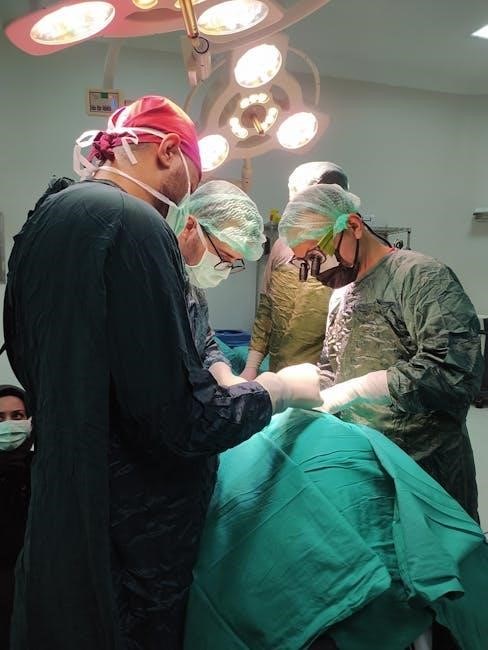
Non-Surgical Management
Non-surgical management focuses on supervised rehabilitation‚ activity modification‚ and the use of non-steroidal anti-inflammatory drugs (NSAIDs) and intra-articular corticosteroid injections to improve joint function and reduce pain.
4.1 Importance of Conservative Treatment
Conservative treatment is often the first-line approach for SLAP tears‚ emphasizing non-invasive methods to restore shoulder function and reduce pain. This approach minimizes the risk of complications associated with surgery‚ promotes natural healing‚ and is cost-effective. It is particularly beneficial for patients with partial tears or those who can modify their activities. Conservative treatment also serves as a valuable precursor to surgical intervention if symptoms persist.
4.2 Role of Activity Modification
Activity modification is crucial in managing SLAP tears‚ focusing on avoiding movements that stress the injured labrum. Overhead activities‚ heavy lifting‚ and repetitive biceps use should be minimized. This approach reduces inflammation and promotes healing. A minimum of 10 weeks without biceps-dominant activities is often recommended. Tailoring activities to the patient’s lifestyle and athletic demands ensures a balanced approach to recovery‚ enhancing the effectiveness of conservative treatment.
4.3 Use of Non-Steroidal Anti-Inflammatory Drugs (NSAIDs)
NSAIDs are commonly used to manage pain and inflammation in SLAP tears. They help reduce discomfort‚ enabling patients to engage in rehabilitation exercises. While NSAIDs do not repair the tear‚ they are a key component of non-surgical management‚ aiding in pain relief and improving joint function during the healing process.
4.4 Intra-Articular Corticosteroid Injections
Corticosteroid injections are used to reduce inflammation and pain in SLAP tears. Administered directly into the shoulder joint‚ they can provide significant relief‚ especially in acute cases. These injections are often combined with physical therapy to enhance recovery. However‚ they are typically reserved for cases where NSAIDs are ineffective‚ as overuse can lead to potential side effects.
Rehabilitation Protocol
Rehabilitation for SLAP tears focuses on supervised programs‚ NSAIDs‚ and corticosteroid injections to promote healing and restore shoulder function without surgical intervention.
5.1 Phase 1: Acute Phase (0-6 Weeks)
The acute phase focuses on pain management and inflammation reduction. Non-steroidal anti-inflammatory drugs (NSAIDs) and corticosteroid injections are commonly used. Patients are advised to avoid activities that aggravate the injury‚ particularly those involving overhead movements or heavy lifting. Gentle range-of-motion exercises and light stretching are introduced to maintain shoulder mobility without causing further damage. Supervised rehabilitation programs ensure proper progression and adherence to the treatment plan.
5.2 Phase 2: Strengthening Phase (6-12 Weeks)
This phase focuses on rebuilding strength and stability in the shoulder. Exercises target the rotator cuff‚ scapular stabilizers‚ and biceps. Activities include shoulder external rotations‚ scapular wall slides‚ and light resistance band exercises. Progression to more dynamic movements is gradual‚ ensuring proper form and control. Range-of-motion exercises continue to maintain flexibility‚ while strengthening the surrounding muscles to support the labrum during recovery.

5.3 Phase 3: Advanced Strengthening and Return to Sport (3-6 Months)
This phase focuses on advanced strengthening and functional activities to prepare for return to sport. Exercises include plyometric drills‚ dynamic stability work‚ and sport-specific movements. Emphasis is placed on improving power‚ endurance‚ and coordination. Patients gradually resume overhead activities and throwing‚ avoiding heavy biceps loading. The goal is to restore pre-injury performance levels while minimizing recurrence risk through tailored progression and monitoring.
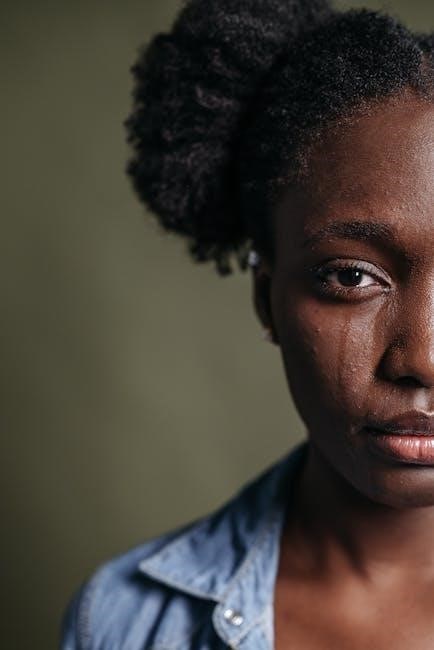
Key Exercises for SLAP Tear Rehab
Essential exercises include scapular stabilization‚ rotator cuff strengthening‚ and biceps/triceps work to restore shoulder function and prevent recurrence.
- Scapular Stabilization Exercises
- Rotator Cuff Strengthening Exercises
- Biceps and Triceps Strengthening
- Proprioceptive and Balance Training
6.1 Scapular Stabilization Exercises
Scapular stabilization exercises are crucial for restoring shoulder stability and preventing recurrence of SLAP tears. These exercises target the muscles around the shoulder blade‚ improving posture and reducing strain on the labrum. Examples include planks‚ bird dogs‚ and shoulder blade squeezes. Strengthening these muscles helps maintain proper scapular positioning‚ which is essential for effective shoulder movement and pain-free function.
- Planks to engage core and shoulder stabilizers.
- Bird dogs to improve balance and scapular control.
- Shoulder blade squeezes to strengthen scapular muscles.
6.2 Rotator Cuff Strengthening Exercises
Rotator cuff strengthening exercises are vital for restoring shoulder function and preventing further injury. These exercises target the four muscles of the rotator cuff‚ improving strength and stability. Common exercises include shoulder external rotations‚ internal rotations‚ and scapular wall slides. Using resistance bands or light weights can enhance effectiveness. Strengthening the rotator cuff helps improve joint stability‚ reduce pain‚ and promote proper shoulder mechanics during daily activities and sports.
- Shoulder external rotations to strengthen the infraspinatus and teres minor.
- Internal rotations to target the subscapularis.
- Scapular wall slides to improve scapular-rotator cuff synchronization.
6.3 Biceps and Triceps Strengthening
Biceps and triceps strengthening is essential for restoring shoulder function and stability. Exercises like bicep curls and tricep dips target these muscles‚ improving joint stability and reducing strain on the labrum. Resistance bands or light weights are often used to enhance strength gradually. Strengthening these muscles helps maintain proper shoulder mechanics and supports the rotator cuff in stabilizing the joint during movement.
- Bicep curls to strengthen the biceps brachii.
- Tricep dips to target the triceps brachii.
- Resistance band exercises for controlled strengthening.
6.4 Proprioceptive and Balance Training
Proprioceptive and balance training enhances shoulder stability and joint awareness‚ crucial for SLAP tear recovery. Exercises like single-leg stands‚ BOSU ball training‚ and wobble board work improve neuromuscular control. These activities help restore the shoulder’s natural movement patterns‚ reducing the risk of further injury and promoting functional recovery. Balance training also strengthens the surrounding muscles‚ aiding in dynamic stability and overall shoulder function.
- BOSU ball exercises for balance and core engagement.
- Single-leg stands to improve proprioception.
- Wobble board training for dynamic stability.
Role of Physical Therapy
Physical therapy plays a crucial role in managing SLAP tears‚ focusing on supervised rehabilitation programs‚ activity modification‚ and pain management to improve shoulder function and reduce inflammation.
7.1 Supervised Rehabilitation Programs
Supervised rehabilitation programs are essential for managing SLAP tears‚ offering a structured approach to recovery. These programs include activity modification‚ scapular stabilization exercises‚ and rotator cuff strengthening. Professional guidance ensures proper technique and progression‚ minimizing the risk of further injury. Key components also involve pain management strategies‚ such as the use of non-steroidal anti-inflammatory drugs (NSAIDs) and corticosteroid injections‚ to reduce inflammation and improve joint function during the healing process.
7.2 Manual Therapy Techniques
Manual therapy techniques are integral to SLAP tear rehabilitation‚ focusing on improving joint mobility and reducing stiffness. Techniques such as joint mobilization and soft tissue work target the shoulder complex‚ enhancing flexibility and strength. These methods‚ often combined with exercises‚ aim to restore normal movement patterns and alleviate pain‚ supporting the conservative management approach to avoid surgical intervention.
7.3 Joint Mobilization and Soft Tissue Work
Joint mobilization and soft tissue work are essential in SLAP tear rehabilitation‚ focusing on improving joint mobility and reducing muscle stiffness. Techniques like gentle joint glides and soft tissue massage target the shoulder complex‚ promoting healing and flexibility. These methods enhance blood flow‚ reduce scar tissue‚ and restore normal movement patterns‚ complementing exercises and activity modification for effective non-surgical recovery.
Return to Sport and Activity
Return to sport requires meeting specific criteria‚ such as pain-free range of motion‚ restored strength‚ and functional stability. Gradual progression of activities ensures a safe transition back to athletic demands‚ minimizing the risk of re-injury and optimizing performance.
8.1 Criteria for Safe Return to Sport
The criteria for safe return to sport include pain-free range of motion‚ full strength compared to the uninjured side‚ and functional stability. Athletes must demonstrate proper scapular mechanics and overhead movement patterns without apprehension. A minimum of 10 weeks of rehabilitation without biceps activity is often recommended. These guidelines ensure the athlete is ready to resume sport-specific activities safely and effectively‚ minimizing the risk of re-injury.
8.2 Gradual Progression of Activities
Gradual progression involves advancing from basic shoulder movements to sport-specific activities. Initially‚ focus on pain-free range of motion and strengthening exercises. As strength and stability improve‚ introduce low-intensity overhead tasks. Progress to dynamic movements and functional drills‚ ensuring proper form and control. Avoid sudden increases in intensity or volume to prevent re-injury. This structured approach minimizes risk while preparing the athlete for full return to activity.
Home Exercise Program
A home exercise program for SLAP tears includes shoulder stretches‚ isometric exercises‚ and scapular stabilization to improve strength and mobility‚ done 2-3 times daily for optimal recovery.

9;1 Essential Exercises for Home
Essential home exercises for SLAP tears include shoulder stretches‚ isometric exercises‚ and scapular stabilization. These exercises improve strength‚ mobility‚ and reduce pain. Perform 2-3 times daily for optimal recovery.
9.2 Tips for Adherence and Progression
Consistency is key in home rehab. Create a structured routine‚ track progress‚ and gradually increase exercise intensity. Ensure adequate rest between sessions to avoid overexertion. Focus on proper form to maximize benefits and prevent further injury; Consider consulting a therapist for personalized adjustments and motivation. Stay committed to achieve optimal recovery and return to normal activities effectively.
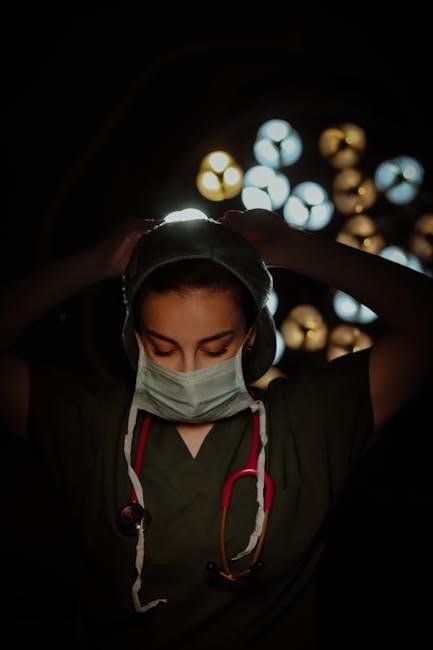
Role of Anti-Inflammatory Medications
Anti-inflammatory medications‚ such as NSAIDs and corticosteroid injections‚ play a crucial role in reducing pain and inflammation‚ aiding recovery without surgery in SLAP tear management.
10.1 NSAIDs in Pain Management
NSAIDs are commonly used to reduce pain and inflammation in SLAP tears‚ aiding recovery without surgery. They help alleviate symptoms‚ allowing patients to participate in rehabilitation exercises effectively.
10.2 Corticosteroid Injections for Inflammation
Corticosteroid injections are used to reduce inflammation and pain in SLAP tears‚ enhancing joint function. They are often combined with physical therapy to improve recovery outcomes without surgery;
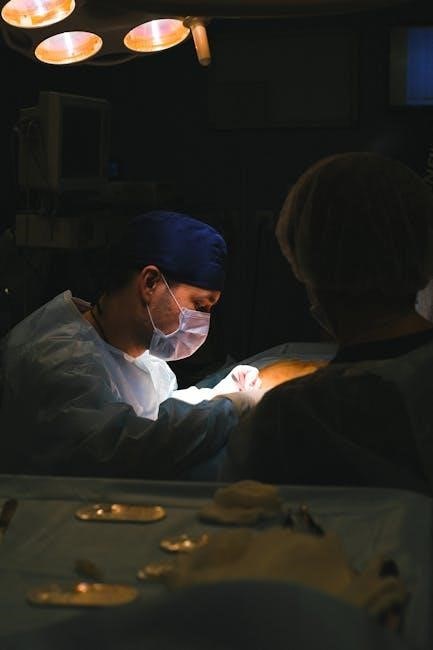
Expected Duration of Rehabilitation
Rehabilitation for SLAP tears typically lasts 3-6 months‚ focusing on gradual strengthening and activity modification to ensure proper healing and prevent recurrence.
11.1 Timeline for Recovery
Recovery from a SLAP tear typically spans 3-6 months‚ with progress divided into phases. The acute phase (0-6 weeks) focuses on pain management and basic mobility. Strengthening begins at 6-12 weeks‚ with gradual resistance exercises. Advanced strengthening and functional activities follow at 3-6 months‚ aiming for a full return to sport or daily activities; Individual timelines may vary based on tear severity and adherence to rehabilitation protocols.
11.2 Factors Influencing Recovery Time
Recovery time for SLAP tears varies based on tear severity‚ patient adherence to rehabilitation‚ and presence of comorbid shoulder conditions. Mild tears may heal faster‚ while more severe cases require extended therapy. Patient compliance with activity modification and exercise protocols significantly impacts outcomes. Additionally‚ individual healing rates and the effectiveness of the rehabilitation strategy play crucial roles in determining the overall duration of recovery.
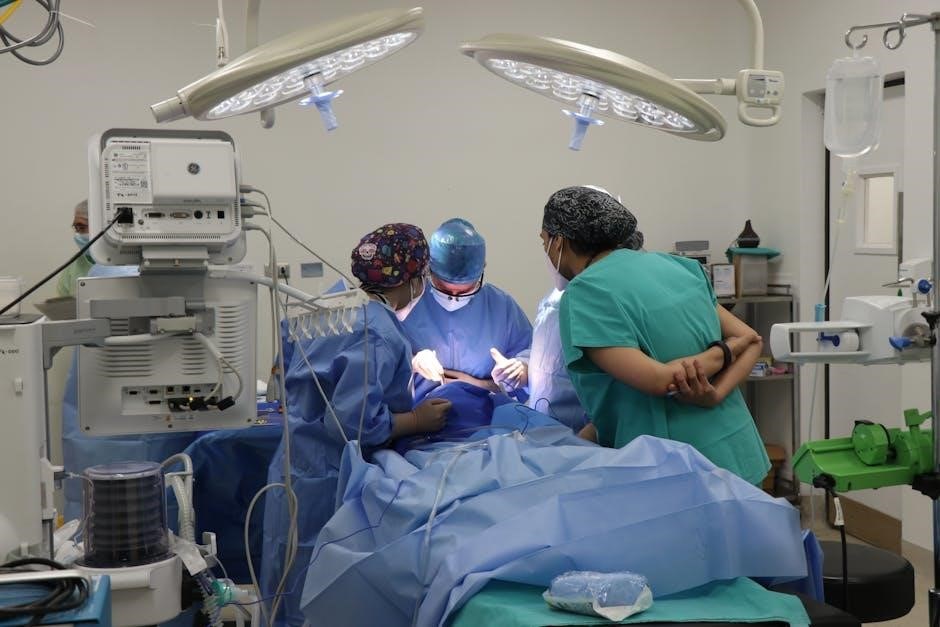
Outcomes of Non-Surgical Management
Non-surgical management of SLAP tears often yields positive outcomes‚ with success rates dependent on tear severity and patient adherence to rehabilitation protocols‚ reducing pain and improving function.
12.1 Success Rates and Patient Outcomes
Studies indicate that non-surgical management of SLAP tears achieves favorable outcomes in approximately 60-80% of patients‚ particularly those with partial tears. Patients often experience reduced pain and improved shoulder function‚ especially when adhering to structured rehabilitation programs. Success rates are higher in non-athletes and those with lower physical demands‚ while athletes may require longer recovery periods to resume overhead activities effectively.
12.2 When to Consider Surgical Intervention
Surgical intervention is typically recommended when non-surgical treatments fail to alleviate symptoms or restore function. This is often the case in high-demand patients‚ those with bucket-handle tears‚ or when concomitant injuries like rotator cuff tears are present. Surgery may also be considered for athletes unable to modify their activities or when labral repair is necessary to restore shoulder stability and prevent further degeneration.